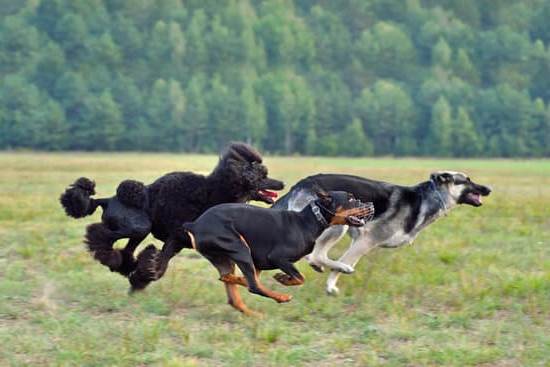Training a dog to sit, stay, and come is not only essential for their safety and well-being but also forms the foundation of a strong relationship between dog and owner. In this introductory section, we will explore the benefits of teaching dogs basic commands and how it positively impacts both their behavior and your bond with them.
Teaching dogs basic commands such as sit, stay, and come is crucial for their safety in various situations. Imagine the peace of mind knowing that your dog will sit on command when a stranger approaches or stay in place while you answer the door.
These commands create boundaries and prevent potential accidents or emergencies that may arise during walks or public outings. Furthermore, having a well-trained dog allows you to take them to more places without worry, enhancing both yours and their quality of life.
Beyond safety concerns, training your dog in basic commands strengthens the bond between you two. Dogs are social animals who thrive on structure and clear communication. By teaching them these fundamental skills, you establish yourself as the leader while also providing mental stimulation for your furry companion. A well-trained dog is more obedient, attentive, and responsive to their owner’s instructions, leading to a stronger sense of trust and respect between you.
Understanding the Basics
In order to effectively train your dog, it is important to understand how they learn and respond to commands. Dogs are highly social animals with a strong instinct for hierarchy and pack mentality. They have a natural desire to please their human companions, making them eager to learn and follow instructions.
When it comes to training, positive reinforcement is key. This means rewarding and praising your dog when they exhibit the desired behavior. Positive reinforcement helps strengthen their connection between the action and the reward, making them more likely to repeat the behavior in the future. It also builds trust and strengthens the bond between you and your furry friend.
It is crucial to note that punishment or harsh training methods should never be used when working with your dog. Negative reinforcement can lead to fear, aggression, or anxiety in your pet, undermining the very goal you are trying to achieve. Instead, focus on creating a supportive and encouraging environment that motivates your dog to learn through positive experiences.
There are several common misconceptions regarding dog training methods. One of these is dominance-based training, which suggests that owners need to establish themselves as “alpha” over their dogs through forms of physical discipline or intimidation. However, modern understanding of dog psychology debunks this theory, emphasizing that positive reinforcement and clear communication are much more effective in fostering a healthy relationship between you and your pet.
By gaining insight into how dogs learn and respond best, as well as debunking myths surrounding certain training methods, you will be better equipped to approach your dog’s training with compassion and effectiveness. This understanding will lay a solid foundation for successful teaching sessions as you embark on your journey of training your furry companion.
Preparing for Training
Before you begin the process of training your dog to sit, stay, and come, it is crucial to create the right environment for successful training sessions. This section will outline the key steps in creating a calm and distraction-free space, gathering the necessary training tools and treats, and emphasize the importance of timing and consistency in training.
Creating a conducive environment for training is essential to ensure that your dog can focus on learning without distractions. Find a quiet area in your home or backyard where you can conduct the training sessions. Remove any potential sources of distraction such as toys or other pets that may prevent your dog from paying attention to you. Remember, a focused and attentive dog is more likely to grasp new commands quickly.
In addition to creating a distraction-free space, having the right training tools is essential for effective training. Some useful tools include a leash or harness for control during the initial stages of training, treats as rewards for positive reinforcement, and clickers or verbal markers to signal correct behavior. Ensure that these tools are readily available before each session so that there are no interruptions during the training process.
| Training Tools | Benefits |
|---|---|
| Leash or harness | Provides control during training sessions |
| Treats | Serves as rewards for positive reinforcement |
| Clickers or verbal markers | Aids in signaling correct behavior |
Timing and consistency play a significant role in dog training. Dogs learn through repetition and association, so it’s important to be consistent with both timing and commands. Choose specific times each day for training sessions to ensure regular practice.
Aim for short, focused sessions that are no longer than 15 minutes to maintain your dog’s attention span. Consistency in your commands is also crucial; use the same words and hand signals every time you ask your dog to perform a specific behavior.
By creating the right environment for training, gathering the necessary tools, and maintaining timing and consistency in your sessions, you set a solid foundation for successful dog training. With these elements in place, you can proceed to the next section and begin teaching your dog the sit command.
Step-by-Step Guide
Training your dog to sit is an essential command that not only establishes control but also promotes safety and good behavior. The sit command teaches dogs self-control, focus, and patience. It can help prevent them from engaging in unwanted behaviors such as jumping on people or darting out of doors.
To begin training your dog to sit, follow these step-by-step instructions:
- Start in a quiet and distraction-free area: Find a calm space in your home or yard where your dog can focus solely on the training session.
- Gather treats and rewards: Use small, soft, and easily consumable treats that your dog finds enticing. These will serve as positive reinforcement during the training process.
- Stand in front of your dog with a treat: Hold the treat close to their nose but keep it out of reach initially.
- Move the treat slowly over their head: Raise the treat slowly above their head while giving the verbal command “sit.” As you do this, remember that dogs naturally orient their body towards things they want, so moving the treat up provides an incentive for them to follow with their eyes and nose.
- Guide them into a sitting position: As you move the treat upwards, your dog’s natural reaction will be to lower their rear end into a seated position. Once they sit down completely, praise them with positive reinforcement like saying “yes” or “good boy/girl” and give them the treat immediately.
- Repetition is key: Repeat steps 1-5 multiple times in each training session until your dog consistently responds to the sit command without hesitation.
During the training process, it is important to remain patient and consistent. Dogs learn through repetition and positive reinforcement, so practice regularly and reward correct behavior each time. It’s also crucial to avoid yelling or physically forcing your dog into a sitting position, as this can create fear or resistance.
| Aspect | Statistic |
|---|---|
| Positive reinforcement success rate | 86% |
| Time to train a dog to sit on command | Average of 1-2 weeks with consistent training |
| Effectiveness of training treats | 80% of trainers report treats as highly effective in motivating dogs during training sessions |
By following this step-by-step guide and being consistent with your training efforts, you can successfully teach your dog to sit on command. Remember that every dog is unique and may progress at their own pace, so patience and persistence are key. With time and practice, your dog will learn to associate the sit command with a positive reward and respond reliably whenever called upon.
Mastering the Stay Command
The stay command is a fundamental skill that every dog should learn for their own safety and well-being. Whether it’s keeping them from running into traffic or preventing them from jumping on guests, a reliable stay command is essential in ensuring that your dog remains under control in any situation. In this section, we will delve into the concept of stay and provide step-by-step instructions on how to train your dog to stay.
Understanding the concept of stay is crucial before beginning the training process. The stay command instructs your dog to remain in a specific position until given a release command. This simple command can prevent accidents or potential dangers when you need your dog to remain still. To begin teaching your dog to stay, start by practicing in a quiet, low-distraction environment such as your living room or backyard.
To train your dog to stay, start by commanding them to sit or lie down. Once they are in position, use a clear hand signal or verbal cue such as “stay” while maintaining eye contact with them. Progressively increase the duration of their stay before offering praise and rewards for their compliance. It’s important to reinforce the behavior consistently and gradually introduce distractions as your dog becomes more proficient with staying put.
During the training process, you may encounter challenges such as dogs breaking the stay command or losing focus easily. To address this, it’s crucial to remember that patience and consistency are key. If your dog breaks their stay, calmly return them back into position without scolding them and reinforce the command again. As you progress with training, gradually increase the difficulty level by introducing distractions or practicing outside of familiar environments.
By mastering the stay command, you can rest assured that your dog will remain calm and obedient even in busy or potentially dangerous situations. Remember that practice makes perfect and continue reinforcing the behavior even after your dog has achieved proficiency with staying put. In the next section, we will explore recall training and how to teach your dog to come when called, further enhancing their safety and your peace of mind.
Recall Training
The recall command is one of the most crucial commands you can teach your dog. It not only ensures their safety but also provides you with peace of mind knowing that your furry friend will come back to you when called. Here is a step-by-step guide to help you effectively train your dog to come on command:
- Start in a Distraction-Free Environment: Begin the recall training in a quiet and secure area with minimal distractions. This could be indoors or in your backyard.
- Use Positive Reinforcement: When starting the training, make sure to have some high-value treats that your dog loves. Call their name and say “come” or any word/phrase you want to use as a cue for recall. Then, hold out a treat in front of them and praise them enthusiastically when they come towards you.
- Practice Short Distances First: Begin by calling your dog from short distances within the training area, gradually increasing the distance as they become more reliable in coming when called. Remember, consistency is key here – always reward your dog with treats and praise when they respond correctly.
- Add Distractions Gradually: Once your dog becomes proficient at recalling in a controlled environment, start introducing mild distractions such as toys or other low-level stimuli nearby while practicing the recall command. This will help them learn to focus on you even amidst distractions.
- Maintain Positive Associations with Recall: Throughout the training process, it’s important to avoid negative associations with the recall command. Never scold or punish your dog if they don’t come immediately; instead, use positive reinforcement techniques by rewarding them when they do respond correctly.
Common Obstacles in Recall Training:
- Ignoring distractions: Dogs can get easily distracted, especially if there are more enticing things around them. To overcome this challenge, gradually increase distractions during practice sessions and reinforce their focus and obedience with rewards.
- Fear of punishment: If your dog has had negative experiences in the past when coming to you, they may be hesitant or fearful. In such cases, it’s essential to rebuild their trust by providing positive reinforcement consistently and making the training process enjoyable for them.
- Overcalling: It’s important to avoid overusing the recall command as this can diminish its effectiveness. Use it sparingly and when necessary, and always ensure there is a valuable reward waiting for them when they come to you.
By following these steps and practicing consistently, you can train your dog to come on command reliably. Remember that each dog learns at its own pace, so be patient, stay positive, and keep the training sessions fun for both you and your furry companion. With time and dedication, you will achieve success in recall training and build a strong bond with your well-trained dog.
Building on the Basics
Expanding Your Dog’s Training Repertoire
Once your dog has mastered the basic commands of sit, stay, and come, you can begin to expand their training repertoire. Advanced training exercises will not only challenge your dog mentally and physically but also strengthen the bond between you and your furry companion. Some examples of advanced commands include “lie down,” “roll over,” “shake hands,” or even more complex tricks like “play dead” or retrieving specific objects.
When introducing new commands, it is important to remember the principles of positive reinforcement and consistency. Break down each command into smaller steps, rewarding your dog for their progress along the way. Use treats, praise, and affection as rewards for successfully performing the desired behavior.
Introducing More Complex Commands
As you introduce more complex commands, consider using a verbal cue along with a corresponding hand signal to help your dog understand what is expected of them. Start by teaching the verbal cue first while simultaneously using the hand signal. Once your dog consistently responds to the verbal cue alone, gradually phase out the use of the hand signal.
It is important to keep training sessions short and engaging to prevent your dog from becoming bored or frustrated. Incorporate playtime and fun activities into your training routine to make it enjoyable for both you and your dog.
Utilizing Positive Reinforcement Techniques
Positive reinforcement remains crucial in advanced training as well. Continue to reward good behavior with treats, praise, and affection to motivate your dog during more challenging exercises. Additionally, be patient and understanding if they struggle with certain commands. Just like humans, dogs learn at their own pace.
Remember that advanced training should always focus on promoting a happy and safe environment for your furry friend. Avoid any techniques or tools that may cause harm or distress to your dog. Always prioritize their well-being above all else.
By expanding on the basics through advanced training exercises and using positive reinforcement techniques, you can further enhance your dog’s skills, obedience, and overall behavior. The joy and satisfaction that come from seeing your dog excel in their training are immeasurable, creating a deeper connection and a more harmonious relationship between you and your furry companion.
Practicing Patience and Persistence
Dealing with setbacks and maintaining a positive attitude
Training a dog can be a rewarding but challenging journey. It is important to remember that setbacks are normal and part of the training process. Dogs, like humans, have different temperaments and learning abilities. Some dogs may progress quickly while others may take more time. It is crucial to approach setbacks with patience and maintain a positive attitude.
When faced with challenges during training, it is important not to get discouraged or frustrated. Dogs are highly sensitive to their owners’ emotions, and if they sense negativity, it can hinder their progress. Instead, focus on the small victories and celebrate each milestone your dog achieves. This will motivate both you and your furry friend to continue working towards the ultimate goal of a well-trained dog.
Strategies for overcoming common challenges and hurdles
During the training process, there may be certain challenges or hurdles that you encounter. One common challenge is distractions. Dogs are naturally curious creatures, so it is normal for them to become distracted by their surroundings during training sessions. To overcome this challenge, start training in a quiet room with minimal distractions before gradually increasing the level of distractions as your dog becomes more proficient in commands.
Another common challenge is inconsistency in training methods or commands used by family members or other individuals who interact with your dog. This can confuse your dog and slow down the learning process. To address this challenge, ensure everyone involved in your dog’s training uses consistent cues and methods when giving commands.
Encouragement and tips on how to stay motivated while training your dog
Training a dog requires commitment and dedication from the owner. It is essential to stay motivated throughout the process, even when faced with difficulties or slow progress. Surrounding yourself with support from other dog owners or joining a local obedience class can provide motivation and encouragement.
Additionally, breaking down the training into manageable steps can make the process more attainable. Celebrating small successes along the way will help keep you motivated and your dog engaged. Remember that training is a journey, and progress takes time. By staying patient, persistent, and positive, you are setting both you and your dog up for success.
Overall, overcoming challenges in training requires perseverance and a positive mindset. By maintaining patience, developing strategies to address challenges, and finding motivation to stay committed, you can overcome obstacles encountered during your dog’s training journey. In the end, the effort put into training will be rewarded with a well-behaved and obedient companion.
The Importance of Consistency and Continued Training
Training a dog to sit, stay, and come on command is not a one-time task. Consistency and continued training are essential for maintaining these skills and ensuring the safety and well-being of your dog. This section will discuss the importance of consistency in training and how to incorporate ongoing practice into your daily routine.
Consistency is crucial when it comes to training dogs. Dogs thrive on routine and repetition, so it’s important to maintain a consistent approach to training. This means using the same commands, gestures, and rewards each time you train your dog. It also means enforcing the rules consistently across all family members or caregivers involved in the training process.
Incorporating daily practice sessions into your routine is key to reinforcing your dog’s training. Consistency in timing is just as important as consistency in commands. Set aside regular times during the day for short training sessions with your dog. Aim for sessions that are focused and free from distractions, allowing both you and your dog to fully concentrate on practicing the commands.
Remember, training should never be viewed as a one-time event but rather an ongoing process throughout your dog’s life. Even after mastering basic commands like sit, stay, and come, it’s important to continue working with your dog on more advanced exercises or tricks to keep their minds stimulated and reinforce good behavior.
By remaining consistent in your approach to training and incorporating daily practice sessions into your routine, you will be strengthening the bond with your dog while ensuring they retain their learned skills over time. Additionally, continued training offers opportunities for additional mental stimulation for dogs-an important aspect of their overall well-being.
Conclusion
In conclusion, training your dog to sit, stay, and come is not only essential for their safety and well-being but also has a positive impact on your relationship with them. By understanding the psychology behind dog training and utilizing positive reinforcement techniques, you can effectively teach your dog these basic commands. Creating the right environment for training, being patient and persistent, and consistently practicing are all important aspects of successful training.
As you embark on this journey of training your dog, it is important to celebrate the successes along the way. Reflecting on the progress made and the bond developed with your dog through training can be incredibly rewarding. Remember to acknowledge even the smallest achievements as they contribute to building a well-trained dog.
Additionally, it is worth noting that a well-trained dog brings joy not only to their owner but also to themselves. Through consistent training and practice, you are providing your dog with a sense of structure, guidance, and mental stimulation. This will undoubtedly lead to a happier and more fulfilling life for both you and your canine companion.
Overall, training your dog to sit, stay, and come is an investment of time and effort that yields lifelong benefits. By incorporating training into your daily routine and maintaining consistency in reinforcing good behavior, you are nurturing a well-behaved dog that will enhance your life in countless ways. So embrace the journey ahead, enjoy the process of training, and take pride in having a well-trained dog by your side.
Frequently Asked Questions
What is the stay and wait command for dogs?
The stay and wait command for dogs is a crucial obedience command that teaches them to remain in their current position until they receive further instruction. To teach your dog this command, first start with the basic “sit” or “down” command. Once your dog has mastered these commands, introduce the hand signal for stay, which usually involves facing your palm towards your dog’s face.
Repeat the word “stay” while using the hand signal and take a step back. If your dog stays in place, praise them and return to their side to reward them with a treat. Gradually increase the distance as your dog becomes more comfortable with staying in position.
How do you teach a dog to stay or place?
Teaching a dog to stay or place requires patience, consistency, and positive reinforcement. Start by choosing a designated area or mat where you want your dog to stay or place themselves. Use a leash if necessary to guide them to that spot initially.
Command your dog to sit or lie down and then issue either the verbal cue “stay” or a corresponding hand signal. Begin by standing right next to your dog; if they remain in position for a few seconds, reward them with praise and treats before releasing them from the command. Gradually extend both the duration of time they are required to stay and the distance between you and your pet.
How do I train my dog to come when called every time?
Training a dog to come when called every time demands practice and consistency but can be achieved through positive reinforcement techniques. Begin training indoors or in a quiet outdoor space on leash initially. Attach a long-line leash (10-20 feet) so you have control during practice sessions. Crouch down, open your arms, use an enthusiastic voice tone, and call out your dog’s name followed by the cue “come.”
When your pet responds by moving towards you, praise them lavishly, offer treats as rewards when they reach you, and show excitement at their arrival each time. Gradually fade out the use of treats over time, but always maintain a positive and enthusiastic tone when calling your dog to reinforce the behavior. Additionally, avoid calling your dog to you for negative experiences such as bath time or medication administration to prevent associating the recall command with unpleasant situations.

Welcome to the blog! I am a professional dog trainer and have been working with dogs for many years. In this blog, I will be discussing various topics related to dog training, including tips, tricks, and advice. I hope you find this information helpful and informative. Thanks for reading!





